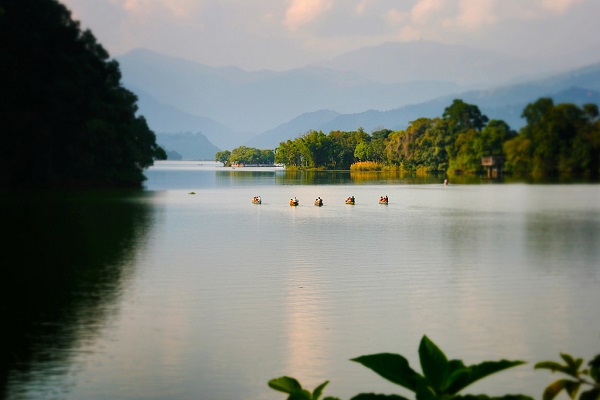Nepal is a landlocked country in South Asia. It is bordered to the north by China and to the south, east, and west by India.

(File Photo: VCG)
Full name: Federal Democratic Republic of Nepal
Area: 147,181 square kilometers
Population: About 28.98 million (in 2016)
Republic Day: May 28
National Day: September 20
Official Language: Nepali
Capital: Kathmandu, with a population of about 500 million
Currency: Nepalese Rupee
Politics:
Nepal promulgated its new constitution on September 20, 2015. In October 2015, Bidya Devi Bhandari, Khadga Prasad Sharma Oli and Onsari Gharti Magar were elected as Nepal’s president, prime minister and speaker of the parliament respectively. In August 2016, Prachanda was elected as Nepal’s prime minister. In June 2017, the president of the Nepali Congress Sher Bahadur Deuba succeeded Prachanda as Nepal’s prime minister. On February 15, 2018, Khadga Prasad Sharma Oli was elected as Nepal’s prime minister again. In March 2018, Bidya Devi Bhandari was re-elected as Nepal’s president.
Economy:
Nepal is an agricultural country with a backward economy and it is one of the least developed countries in the world. Since the beginning of the 1990s, the implementation of a market-oriented free economic policy has begun in Nepal, but due to the political situation and weak infrastructure, the efforts have not been effective. Nepal relies heavily on foreign aid and a quarter of its budget expenditure comes from foreign donations and loans. The main economic data for Nepal’s 2017/2018 fiscal year are as follows:
Gross domestic product: $29.3 billion
Per capita GDP: $1,003.6
GDP growth rate: 5.89 percent
(The fiscal year of Nepal starts on July 16 of the previous year and ends on July 15 of the following year.)
Relations with China:
China and Nepal established diplomatic relations on August 1, 1955. The two countries decided to establish and develop a China-Nepal Comprehensive Partnership of Cooperation featuring ever-lasting friendship on the basis of the Five Principles of Peaceful Coexistence.
Chinese and Nepali governments signed a Memorandum of Understanding on bilateral cooperation under the framework of the Belt and Road Initiative on May 12, 2017.
China is Nepal’s second largest trading partner. From January to November 2018, the bilateral trade volume was $990 million, an increase of 13.1 percent year on year. Among them, China’s exports to Nepal were valued at $970 million, an increase of 12.8 percent. China’s imports from Nepal were valued at $20.63 million, an increase of 29.1 percent.
Since 1956, China has provided economic and technical assistance to Nepal to build a number of projects, which mainly include roads, brick and tile factory, paper mill, hydropower station, textile mill, tannery, water irrigation projects, sugar mill and international conference building.
As of September 2018, China’s accumulated non-financial direct investment in Nepal was $330 million. Nepal’s companies have invested a total of $2.5 million in China.
China has successfully held eight China Festival events and eight China Education Exhibitions activities in Nepal as of 2018. In 2007, the Confucius Institute was established at Kathmandu University. In recent years, China has been the second largest source of tourists in Nepal.


